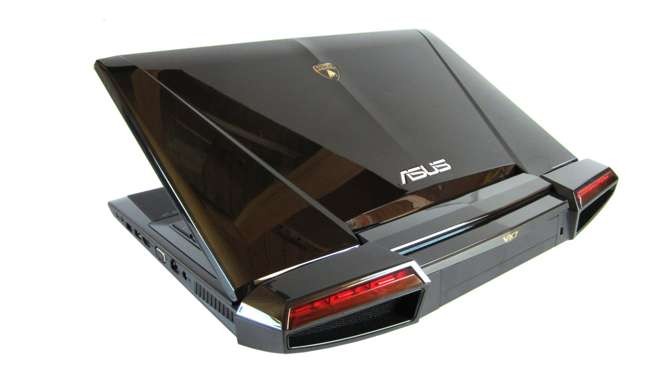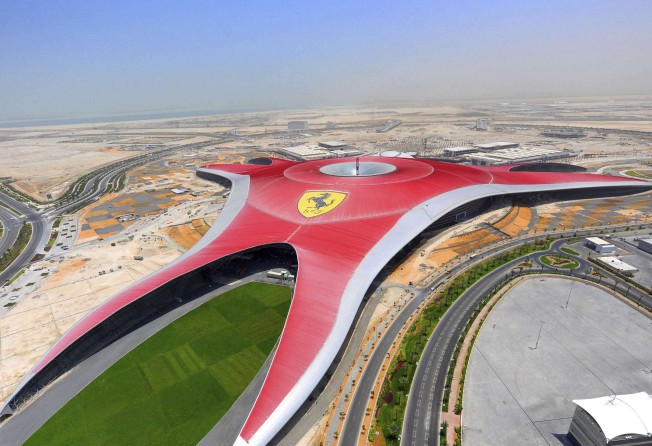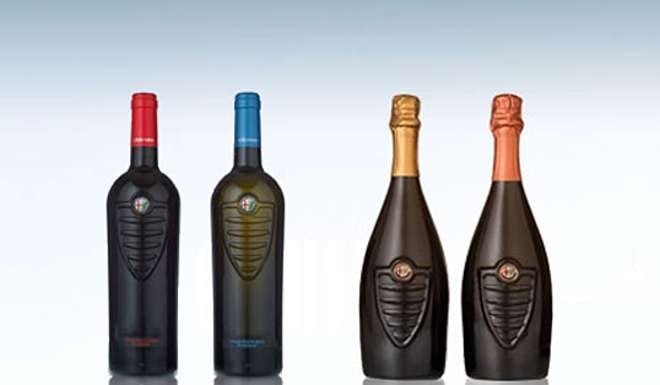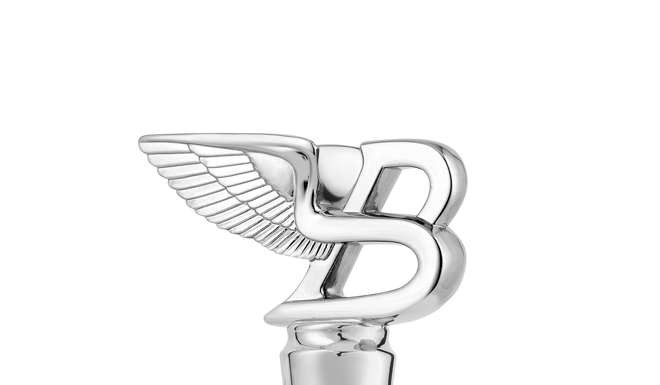
From laptops to wine stoppers; How the world’s top automotive brands judge what’s right in product licensing

When Bugatti opens its fifth shop later this year, in Doha, passers-by might for forgiven for thinking some major mistake had been made. Where, they might ask, are all the cars? Then again, to others this thought might not occur at all.
“I think there are probably people who go into these shops without even knowing that Bugatti is a carmaker,” says Wiebke Bauer. “In fact, I hope so, because that means the products inside are good enough to stand up on their own merits.”
Bauer is the head of licensing for Bugatti; it’s her job to develop non-automotive products that cash in on the famed automotive name. That’s why in recent years there’s been the option to spend HK$116,000 on a Bugatti Veyron pen, a pair of shoes or a leather jacket, each made in a limited edition. It’s why you’ll soon be able to buy a HK$289,000 Bugatti bicycle – at under 5kg claiming to be the world’s lightest urban bike – which you can ride around your Bugatti villa. Naturally your villa will – thanks to the launch last year – be filled with Bugatti furniture. The company is now pondering a Bugatti yacht.

“The idea has always been that we’re a top luxury sportscar brand and that, strategically, that means we can be open to offering other Bugatti products, and especially since a Bugatti car itself is so hard to find. I mean, a lot of people haven’t ever even seen a modern Bugatti in real life,” Bauer concedes. “Bugatti has the history, performance, design pedigree – the brand came out of a family of artists – and these values can all appeal in other products. It also brings in money.”
Indeed, lest anyone think that the extension of any car brand into non-automotive products is simply a marketing exercise, it is not. It’s a worthwhile income stream for brands able to develop it. Ferrari, arguably the most aggressive of brand extenders, pulls in some HK$474 million profit a year in merchandise sales and licensing. That’s a fraction of what it invests each year into R&D, but a help nonetheless.
And certainly plenty of other brands have launched products in obvious categories: aside from the expected luxury goods – clothing, homewares, fragrances, watches, scented candles – recent years have seen a Lamborghini laptop, Land Rover baby stroller and Audi Silver Arrow racing car. That’s in 1:2 scale, when Audi became the first carmaker to show at Nuremberg’s International Toy Fair.
Money aside, says Karin Schilcher, head of brand lifestyle for Bentley, car companies generate profile through such activities. Bentley has just launched a titanium chronograph in partnership with Breitling, just to mark the launch of its new Continental Supersports.

Schilcher notes that the launch of a new product gives Bentley’s retailers a good reason to talk to their established customers, ones who otherwise they might not see for years at a time. “And then there’s the chance to talk to people we don’t normally talk to,” she adds. “If we do a phone, for example [and Bentley has, with Vertu], then we get introduced to the phone company’s customers. We have ours and in between there’s an overlap we can work with.”
But quite why, in particular, car companies should have a resonance such that people want to buy related goods is the stuff of consumer psychology theorising; even fashion brands – the pioneers of brand extension – are limited in the things they can put their names to. This, after all, is a market in that extends well beyond what the car companies produce themselves, or in official partnership or under license agreement.
This is a market in which – all ironies of the taboo surrounding drink-driving aside – an Italian winemaker by the name of Scrimaglio has produced bottles of wine branded by, for example, Alfa Romeo or Lancia, with the glasswork reflecting the carmakers’ signature grilles. It’s one in which British company GTO can sell cufflinks made of bits of old Ferraris, in which a company like Racechairs can thrive: it makes executive chairs using authentic seat parts from the more covetable sports cars, with Porsche and Maserati among the more popular marques. These are, as founder Ron Hansen has it, “the sexy brands. It works for some car companies and not for others, of course. Put it this way, no one has asked for a Ford chair yet”.
Not that the more mass-market likes of Ford should be dismissed. According to a report by License Global, Ferrari may be the 23rd most licensed brand – that’s in the world, putting it ahead of the likes of Twentieth Century Fox, Ralph Lauren and the Cartoon Network – but Ford takes the 30th spot. Product tie-ins have included jeans and golf carts, with the Mustang sub-brand especially successful. The Chrysler Group is at 51st place. Even Goodyear and Michelin are in the top 100.

Certainly entry-level products give hardcore fans the chance to buy into a famous make of car whose main product most, of course, will never own – though Schilcher says that Bentley merchandise is mostly bought by Bentley customers. “But the fact is that cars are still a big part of our lives – they have an emotional resonance that a lot of things we buy don’t have and that encourages a commitment to a brand, that makes it something we want to buy into,” she adds. “Lots of car brands encourage a strong loyalty – an Audi customer, for example, is likely to buy an Audi next time too.”
Isn’t there any concern that extending a car brand too far will damage it? Pierre Cardin is the marketing school test case of the prestigious name that came to be regarded as anything but by putting its name to just about anything. Super-brand Ferrari – with its swim shorts, domino sets, cigar cases and even hatboxes, not to mention its own theme park – might be regarded as at the limit, yet it keeps opening shops around the world. Doesn’t that baseball cap just cheapen the brand whose name is emblazoned across it?
The trick, Schilcher counters, is to make it to as high a standard as possible.
“Even something like a lanyard, for example, can be done well,” she says. “Obviously there are really cheap lanyards. But there are really nice ones too, even if they’re all just something you hang a ticket from. On ours the buckle alone costs £35 (HK$330). It’s not something you want to throw away.”
“So far everything we’ve launched has been, for the product, in a comparable price bracket to the car, though I think there’s room for extend the scope into more affordable products without damaging the brand,” adds Bauer of Bugatti. “I feel the products always have to be aspirational. Certainly there is a danger of going too fast, or into a category you’re not sure about. It can be risky. You can lose control.”

That cuts both ways too. When watch company Bremont was approached by Jaguar to make a small run of watches for the customers of a small run of special cars, it didn’t have to think long before saying yes, not least because it already makes clocks for the British carmaker’s concept vehicles, as well as for all of Queen Elizabeth’s stretch Jaguars.
“If the fit is right between two brands, there’s a halo effect,” says Bremont’s co-founder, Giles English. “Would we turn down Ford, or a brand at a similar place in the market? It depends on if it was a particularly interesting project. It depends on the Ford. If it was the Ford Mustang, it might be a different matter. The fact is that car brands are hugely powerful – just look at the volume of advertising they put out there. But what you don’t want is consumers to look at the product and say ‘that’s cheesy’.”
Schilcher agrees there’s a fine line to tread. Bentley, as do other car brands, seeks to reflect the craftsmanship and/or the aesthetic of its cars in its spin-off merchandise – products often represent a transfer of skills from the car assembly line, for example, or a specific design detail from a specific model, maybe even a certain smell. Often members of the Bentley Design Studio get to stretch their wings and design something non-automotive, and when working with a specialist partner to provide a more specialist product, are deeply involved in the many rounds of the approval process. There has to be goods affinity, she argues.
“It’s why we have six license partners when we could have 20. We have a lot of offers that we say ‘no thank you’ too,” she says. “We’d say no to doing, say, a Bentley mattress. There are very technical, very high-end mattresses, but what could be Bentley’s part in it? You can’t put out any products and just stick Bentley’s name on it. That said, perhaps we could put the same seat heating and cooling system into a mattress. So maybe one day...”